A dining room remains a desirable home feature, whether it is a distinct room or integrated into an open plan. Shapes and sizes of dining tables, chairs and furniture need to be considered so personal movement is not impeded when the room is fully in use.
Table and seat heights tend to be standard but all else varies greatly. Take into consideration your decor, your lifestyle and how frequently you will use the space when you’re planning a layout and shopping for furnishings.
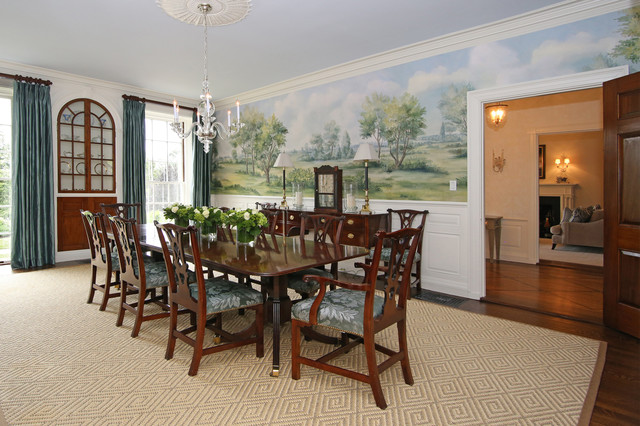
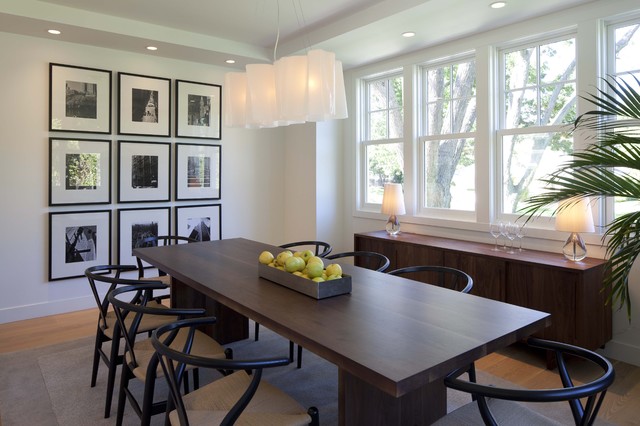
Contemporary. Smaller-scale furnishings in modern designs will suit contemporary tastes well, as illustrated in this room. This layout also supports a sideboard, but its table is a fixed rectangular plank style with bentwood chairs and rush seating. A modern glass chandelier replaces the traditional crystal type shown in the previous photo.
A dimension of 36 to 42 inches (91 to 107 centimeters) around the entire table allows for chairs to be occupied with space for others to pass. If your table is 36 in. (91 cm) wide and 72 in. (183 cm) long, this scheme will work in a room that is as little as 11 ft. (3.4 m) wide by 12 ft. (3.6 m) long, considering a 2-ft. (61-cm) depth for the sideboard.
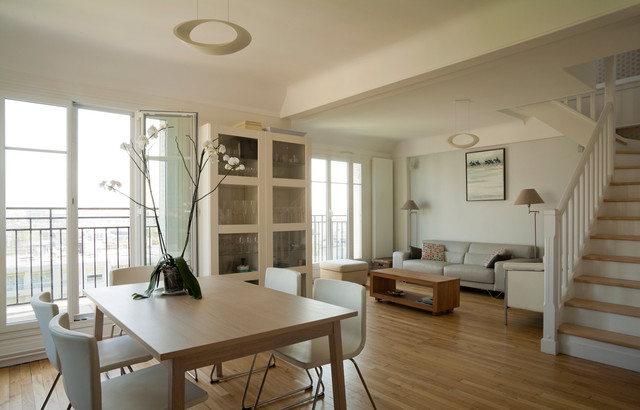
Open-Plan Dining Areas
Urban. Many open-plan homes, whether urban or suburban, integrate dining spaces into contiguous living and kitchen areas. The challenge is that wall space will likely be minimal for the placement of sideboards and china cabinets. In the design here it is solved with tall glass-enclosed cabinets that offer storage for tableware and lend decorative appeal.

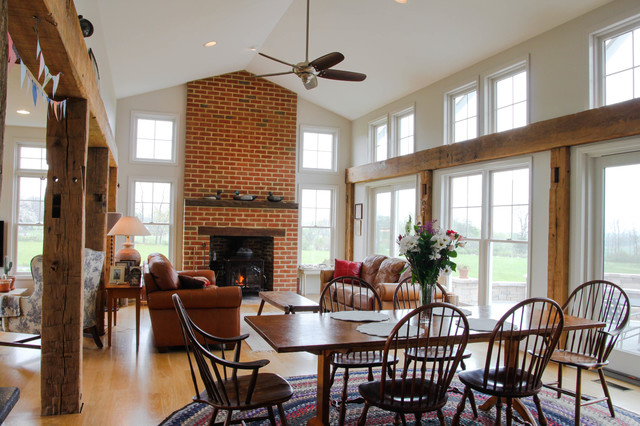
Suburban. This dining table is nestled between the end of the kitchen and a living area. Its proximity to the kitchen takes care of tableware storage. The rug underneath helps to define the parameters. Notice there is plenty of space around the table and chairs.
Be sure to provide extra space when placing dining tables within circulation routes, as has been done here. Not only does traffic pass from the kitchen into the living area, but it also crosses to exit through the sliding glass door to the right and connects to the room at left. Leaving 48 to 60 in. (122 to 152 cm) beyond the edge of a table can be sufficient for this type of layout.
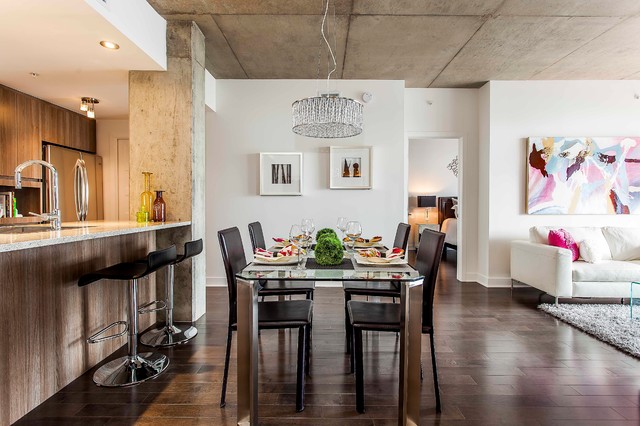
Combination Layouts
More than a few homes in urban environments have layouts similar to this one. A large, rectangular shape houses the living room, with windows at one end of a large space and a kitchen at the other. The dining area must rest between these points.
Note that the backs of two chairs align with the backs of two bar stools. You will need more space in a similar setup if you will use these seating positions simultaneously, less if you will use them independently. Also note that the dining table chairs are arranged opposite each other. Placing one on each side of the table is another option.

Seating
Dining chairs come in an extraordinary range of shapes, sizes and styles. Which are best for you depends on the size of your spaces and the theme of your decor.
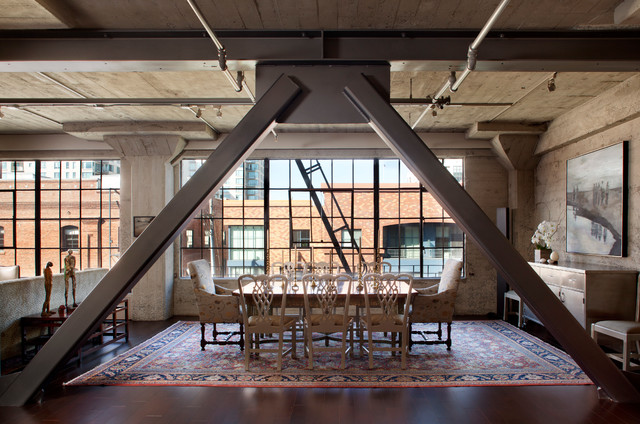
Here an urban loft with generous volumes mixes contemporary style with traditional chairs around a detailed rectangular wooden table. Fully upholstered chairs head the table, and Chippendale-style side chairs provide further seating.
The upholstered armchairs are closer to 26 in. in width and 26 in. in depth (66 by 66 cm), and the wooden side chairs are about 2 ft. (61 cm) in width and depth.
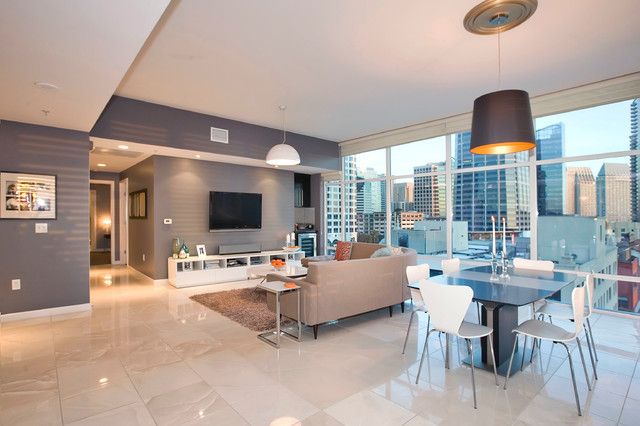
The Series 7 dining chairs in this photo have a significantly smaller footprint and flow with the sleek modern theme in this urban high-rise. Also note that tables supported by an individual or double pedestal can work better in smaller spaces. The loft can easily take on the four legs of the large wooden table.
Series 7 chairs have a footprint of 20½ in. in width and 20 in. in depth (52 by 51 cm).
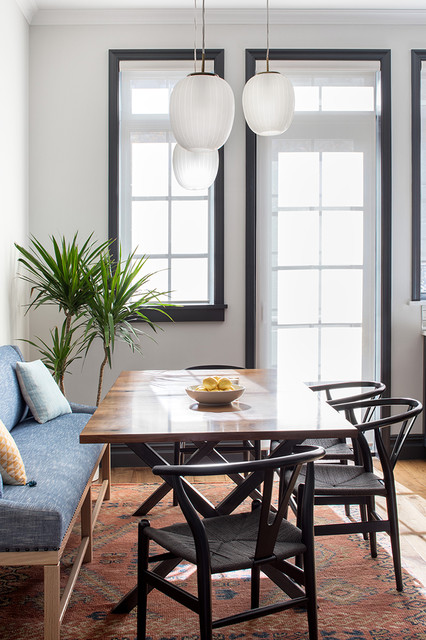
Another seating option is the banquette. Usually reserved for restaurants, banquettes can assist when space is limited and it’s necessary to push the seating up against the wall.
Here an upholstered banquette completes the dining space. Upholstered banquettes will need at least 2 ft. (61 cm) in depth to function well. The width depends on individual circumstances, but generally they should accommodate just two people.
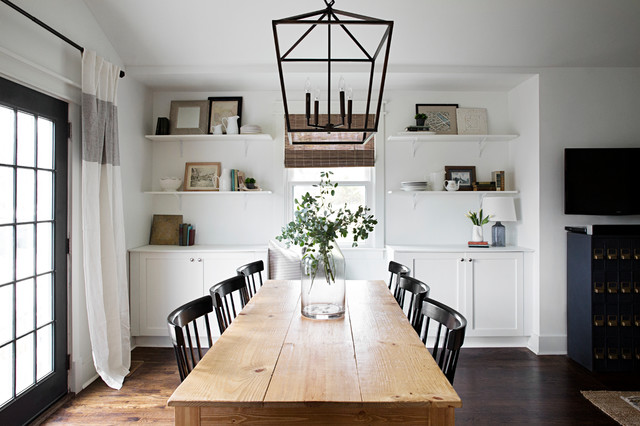
Dining Table Shapes
Rectangular. Carefully consider shape when buying dining room tables. Rectangular ones are the most traditional and readily available. Some rectangular shapes come with leaves so you can extend them for larger dinner events.
Most widths are 36 to 42 in. (92to 107 cm). Lengths vary greatly, but formal dining tables usually need at least 66 in. (168 cm) in length to work properly with six table settings. You can get tables that extend up to 120 in. (305 cm), sometimes a little more; leaves that are 72 to 84 in. (183 to 213 cm) in length are common for stationary tabletops.
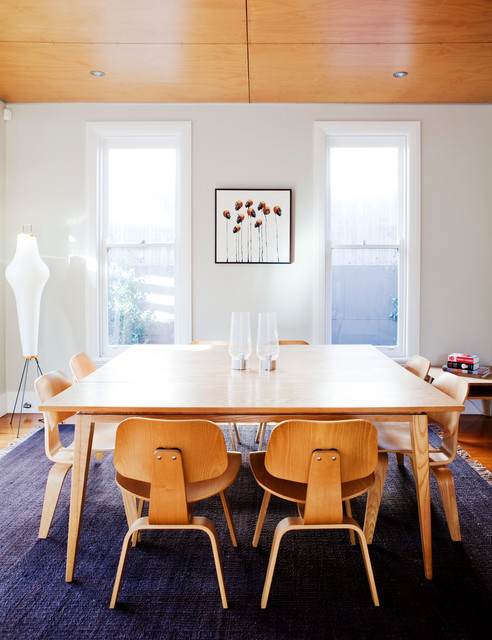
Square. Square dining tables are also available. While 36, 42 and 48 in. (91, 107 and 122 cm) ones are readily available in less formal dining furniture, larger ones — 54, 60 and even 72 in. (137, 152 and 183 cm) square — can now be found.
This contemporary dining room celebrates its plywood theme with a large square dining table in a natural finish, along with Eames bent-plywood dining chairs. These chairs measure 19½ in. in width and 21¾ in. in depth (50 by 55 cm).
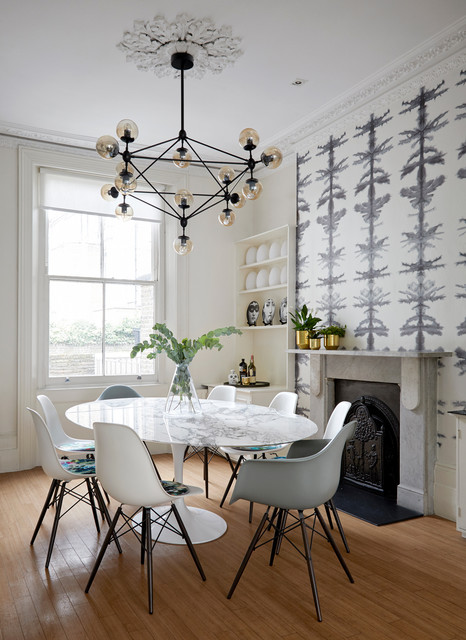
Oval. Readily available in traditional and modern designs is an oval dining table. Oval shapes can sometimes help smaller spaces flow more easily, since no one will need to navigate a square corner.
Shown here is Eero Saarinen’s iconic modern oval dining table with a cast aluminum pedestal base and marble top. This stunning design is made in either a 78-in. (198-cm) length and 47¾-in. (121-cm) width, or a 96-in. (244-cm) length and 54-in.(137-cm) width. In this space the table is paired with Eames molded fiberglass dowel-leg side chairs, which have a footprint of 18½ in. in width and 21 in. in depth each (47 by 53 cm).
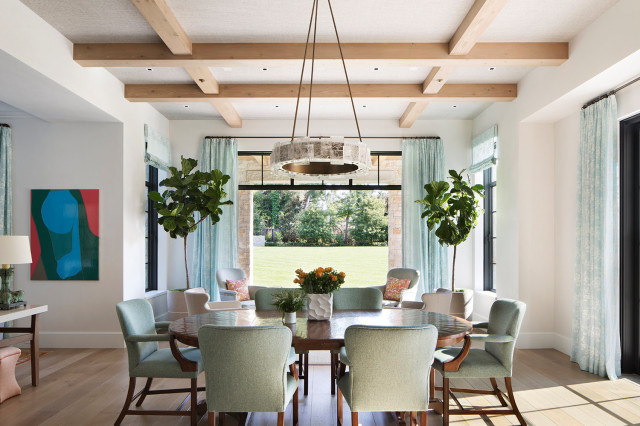

Use this illustration as a simple guide to assist in selecting furnishings and planning arrangements. Important elements are:
- Room width
- Room length
- Table shape
- Table size
- Chair type
- Chair size
- Cabinet type (sideboard or hutch)
- Cabinet size
- Circulation clearances
Take into consideration your decor, your lifestyle and how frequently you will use the space when you’re planning a layout and shopping for furnishings. (cited)
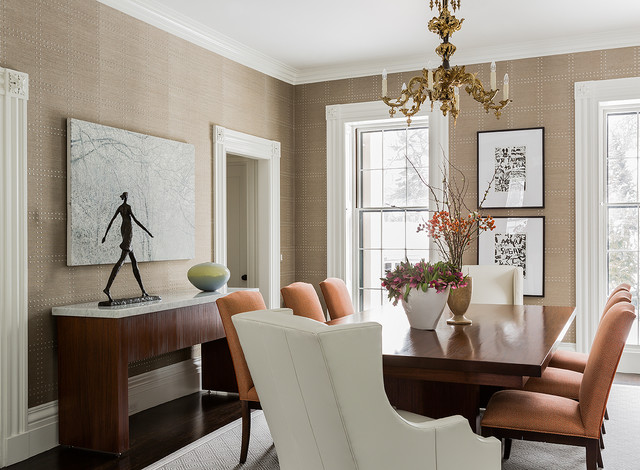


Traditional. Traditional dining rooms can be generously proportioned, as this one is. Long, rectangular tables that adjust with leaves typify its style, while a sideboard provides storage for table linens and serveware and functions as a serving platform. Freestanding glass-enclosed china cabinets are still readily available. However, the design here shows a built-in that serves this purpose on the wall between the windows. This room also hosts a fireplace on an opposite wall.Spaces with these features and furnishings require a larger-than-average room. You will need at least 14 feet (4.3 meters) in width and 16 ft. (4.9 m) in length for a similar arrangement, but 15 ft. (4.8 m) wide by 20 ft. (6.1 m) long will likely function better.